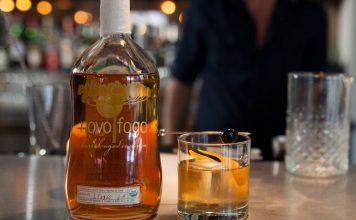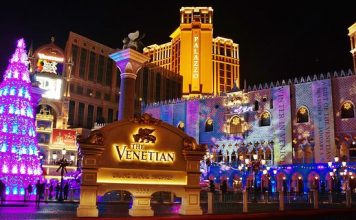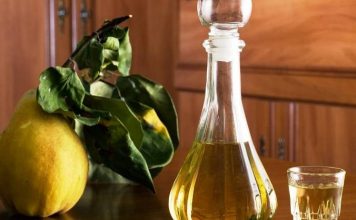Florence is a city in Tuscany, Italy, that is famous for its art, culture, history, and cuisine. Florence is considered the birthplace of the Renaissance, a period of artistic and intellectual flourishing that spanned from the 14th to the 17th century.
What is Florence Known For?
Florence was home to some of the most influential artists, writers, scientists, and thinkers of all time, such as Leonardo da Vinci, Michelangelo, Dante, Machiavelli, Galileo, and the Medici family. Florence is also known for its stunning architecture, such as the Duomo, the Ponte Vecchio, and the Palazzo Vecchio. Florence has more than 70 museums and galleries that display some of the world’s most famous artworks, such as the David by Michelangelo, the Birth of Venus by Botticelli, and the Annunciation by Leonardo da Vinci. Florence is also a UNESCO World Heritage Site since 1982, for its outstanding cultural and historical value.
Famous Drinks in Florence
Florence has a variety of drinks that reflect its history, culture, and taste. Some of the most famous drinks in Florence are:
- Wine: Wine is one of the most popular drinks in Florence, as Tuscany is one of the most renowned wine regions in Italy and the world. Tuscany produces some of the finest red wines, such as Chianti, Brunello di Montalcino, and Vino Nobile di Montepulciano. Tuscany also produces some excellent white wines, such as Vernaccia di San Gimignano and Vin Santo. Wine is often paired with local dishes, such as bistecca alla fiorentina (T-bone steak) or ribollita (vegetable and bread soup).
- Coffee: Coffee is another drink that is very important in Florence and Italy in general. Italians love their coffee and have many different ways of preparing it, such as espresso, cappuccino, macchiato, latte, and more. Coffee is usually consumed in the morning or after meals, and sometimes with a pastry or a biscotti. Coffee is also an essential part of the social life in Florence, as people often meet at cafes to chat and relax.
- Aperitivo: Aperitivo is a drink that is served before dinner, usually between 6 pm and 9 pm. Aperitivo is meant to stimulate the appetite and prepare for the meal. Aperitivo can be alcoholic or non-alcoholic, such as spritz (a cocktail made with prosecco, Aperol or Campari, and soda water), negroni (a cocktail made with gin, vermouth rosso, and Campari), or fruit juice. Aperitivo is often accompanied by snacks or finger food, such as cheese, salami, olives, bruschetta, and more.
- Grappa: Grappa is a drink that is served after dinner, usually as a digestive aid. Grappa is a distilled liquor made from grape pomace (the leftover skins, seeds, and stems of grapes after wine making). Grappa can be clear or aged in wooden barrels to give it color and flavor. Grappa can be strong and bitter or smooth and aromatic, depending on the quality and type of grapes used.
Famous Sports in Florence
Florence is a city that loves sports and has many teams and events that represent it. Some of the most famous sports in Florence are:
- Football: Football is arguably the most popular sport in Florence, both among locals and visitors. Football has a long history in Florence, dating back to the 19th century when German immigrants brought their brewing skills and recipes to the city. Today, Florence has one professional football team: ACF Fiorentina, which plays in Serie A (the top division of Italian football). Fiorentina has won two Italian championships and six Italian cups in its history. Fiorentina plays at the Stadio Artemio Franchi, which has a capacity of about 43,000 seats. Fiorentina has many loyal fans who cheer them on at every game.
- Calcio Storico: Calcio Storico is a sport that is unique to Florence and dates back to the 16th century. Calcio Storico is a combination of football (soccer), rugby, and wrestling that is played by four teams representing the four historical districts of Florence: Santa Croce (blue), Santo Spirito (white), Santa Maria Novella (red), and San Giovanni (green). Calcio Storico is played on a sand-covered field in Piazza Santa Croce, with 27 players on each team who try to score goals by throwing a ball into a net at each end of the field. Calcio Storico is a very rough and violent sport, as players are allowed to punch, kick, and tackle each other. Calcio Storico is played only once a year, in June, with two semifinals and a final match. The winners receive a white calf as a prize.
- Cycling: Cycling is another sport that has a strong connection to Florence and Tuscany. Tuscany is one of the most beautiful and scenic regions for cycling, with its rolling hills, vineyards, olive groves, and medieval villages. Tuscany has also produced some of the best cyclists in the world, such as Gino Bartali, Fiorenzo Magni, and Mario Cipollini. Florence has hosted several cycling events, such as the Giro d’Italia (the most prestigious stage race in Italy) and the UCI Road World Championships (the annual world championship for road cycling). Cycling is also a popular recreational activity in Florence, as there are many bike rental shops and bike tours available.
Famous Streets in Florence
Florence has some of the most interesting and iconic streets in the world, where you can find history, culture, entertainment, and shopping. Some of the most famous streets in Florence are:
- Via de’ Tornabuoni: Via de’ Tornabuoni is a street that runs through the heart of Florence and is known as the most elegant and fashionable street in the city. Via de’ Tornabuoni is home to some of the most prestigious and luxurious brands in the world, such as Gucci, Prada, Armani, Ferragamo, and more. Via de’ Tornabuoni is also lined with beautiful palaces and churches, such as Palazzo Strozzi, Palazzo Antinori, and Santa Trinita.
- Via dei Calzaiuoli: Via dei Calzaiuoli is a street that connects Piazza del Duomo with Piazza della Signoria, two of the most important and famous squares in Florence. Via dei Calzaiuoli is a pedestrian street that is always crowded with tourists and locals who enjoy its lively atmosphere and its many shops, cafes, restaurants, and gelaterias. Via dei Calzaiuoli also has some historical and artistic attractions, such as Orsanmichele(a former granary turned into a church), Loggia del Bigallo (a Gothic loggia that houses a museum), and Palazzo Vecchio (the town hall of Florence).
- Via dei Neri: Via dei Neri is a street that runs parallel to the Arno River and is known as one of the best streets for food lovers in Florence. Via dei Neri is famous for its many delicatessens, bakeries, pizzerias, trattorias, and gelaterias that offer some of the most delicious and authentic Florentine specialties, such as schiacciata (a flat bread with olive oil and salt), lampredotto (a sandwich with tripe), pappa al pomodoro (a tomato and bread soup), cantucci (almond biscuits), and more. Via dei Neri is also home to All’Antico Vinaio, one of the most popular sandwich shops in Florence.
FAQs about Florence
Here are some frequently asked questions about Florence:
- What is Florence’s nickname? Florence’s official nickname is “The Cradle of the Renaissance”, which refers to the city’s role as the center of artistic and intellectual innovation that marked the transition from the Middle Ages to the Modern Era. Florence also has other nicknames, such as “The City of Lilies”, “The City of Art”, and “The Jewel of Tuscany”.
- What is Florence’s motto? Florence’s official motto is “Florentia Fertilitatis et Civitatis Matris” (“Florence Mother of Fertility and Civilization”), which was adopted in 1997. The motto expresses the city’s pride in its cultural heritage and its contribution to human civilization.
- What is Florence’s flower? Florence’s official flower is the iris (or lily), which has been a symbol of the city since the 11th century. The iris is depicted on the city’s coat of arms and flag, which are red with a white fleur-de-lis (a stylized iris). The iris also represents Saint Zanobi, the patron saint of Florence.
- What is Florence’s bird? Florence’s official bird is the red-billed chough (or cornacchia grigia), which is a crow-like bird with a red bill and legs. The chough has been associated with Florence since the 13th century, when it was believed to have saved the city from an attack by Emperor Frederick II by alerting the citizens with its cries. The chough also symbolizes freedom and independence.














